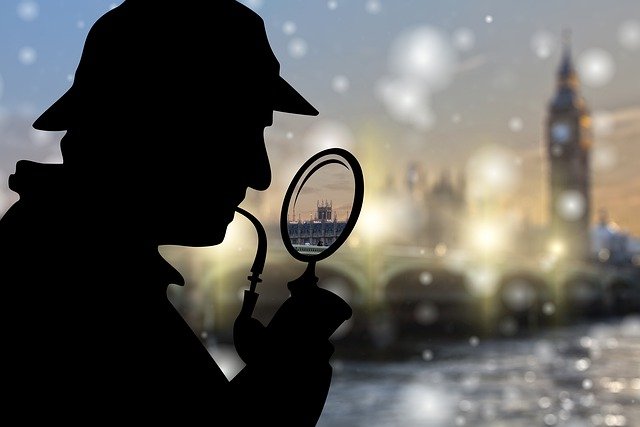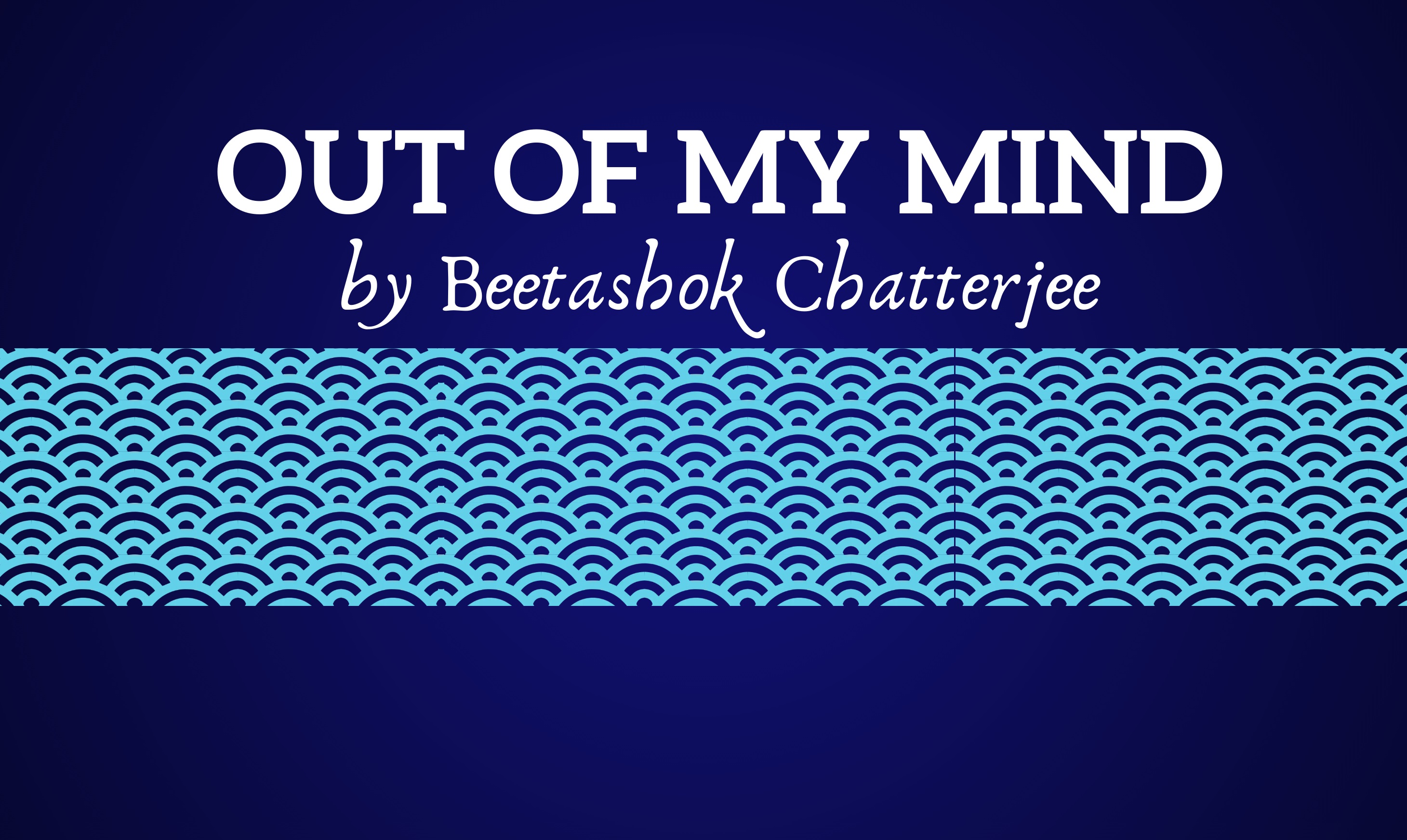‘Elementary, my dear Watson.’
Which reader of fiction is not familiar with this catchphrase? It is purported to be uttered by Sherlock Holmes, arguably the most famous fictional detective ever created, and perhaps one of the most famous fictional characters of all time. I don’t think Holmes actually uttered this phrase in any of his stories, but the legend lives on. This hawk-nosed, tall, gaunt figure clad in a travelling cloak and deerstalker cap, or smoking a pipe in his lodgings at Baker Street, London, is the most portrayed literary human character in film and television history. There have been dozens of Holmes-related pastiche works by authors other than his creator Sir Arthur Conan Doyle, the last ones being the excellent House of Silk (2011) and Moriarty (2014) by Anthony Horowitz. And there will be many more.

Image Source: Pixabay
But Holmes was not the first fictional detective in history. Nor are the Sherlock Holmes stories the first ever in the category of detective or mystery fiction. That honour goes to Auguste C .Dupin created by American writer Edgar Allan Poe in 1841 in his story The Murders on the Rue Morgue. I haven’t read that one, though I did one of Poe’s horror stories, which caused me to swear to myself ‘never again’. Holmes was inspired in part on Poe’s detective Dupin. British writer Wilkie Collins' mystery novels The Woman in White (1860) and The Moonstone (1868) predate Holmes, who came to ‘life’ only in 1887, and are considered the first ever mysteries. Nevertheless, it is the Sherlock Holmes series which is said to be singularly responsible for the huge popularity of mystery fiction—a popularity that has continued till date—in the form of books, comic books, graphic novels, films and TV series.
I love mystery fiction. Call it what you will— detective fiction, thrillers, crime novels, whodunits, suspense novels, police procedurals, hard-boiled detective stories, espionage, medical or forensic mysteries, cozy mysteries, closed-room mysteries, courtroom dramas—I love them all. Far better than boring nonfiction, no? I’ve been hooked since childhood. From the mysteries solved by Enid Blyton’s The Five Find Outers and The Famous Five (a few of us had formed our own secret detective society in the 5th Std in school looking for mysteries to solve), I graduated to Nancy Drew and The Hardy Boys. Later, I was well into the racy thrillers of James Hadley Chase and the murder mysteries of Agatha Christie in my final year of school. Remember there was no internet and very little television those days; so we just read and read.
What is a mystery novel? It is a fiction genre, where a murder or a theft (or several) remains a mystery till the end of the story, keeping the reader guessing, and—if it’s a well written one—engrossed. There is some overlap with ‘thriller’ or ‘suspense’ novels and authors in those genres do consider themselves mystery novelists.
There are sub-genres in Mystery, as any avid reader will tell you. A mystery novel can be a Cozy Mystery, the kind popularized by Agatha Christie and Ngaio Marsh, where there is very little violence or sex, and the mystery is solved through intellect or intuition by an amateur sleuth, with order restored in the end. The characters are generally well bred, and the setting is in a closed community. (Did the butler do it?) Among the current crop of writers, Richard Osman has perfected the cozy mystery with his delightful Thursday Murder Club series, where a group of very likeable octogenarian amateur sleuths solve the crimes in a sleepy English countryside setting. The plots are intricate and the humour clever.
A mystery novel can be a Police Procedural, where the police officer solving the crime is the main character. Many authors try to realistically depict the routine activities of a police detective frequently working on more than one case simultaneously, following police procedures, plodding on and on. The reader gets a glimpse of his personal life as well, which is generally not a happy one. Ed McBain (Heat) and Joseph Wambaugh (The Choirboys) are examples of such type of writing. Lawrence Sanders wrote The First/ Second/ Third Deadly Sin with his protagonist Captain Edward X. Delaney handling the murder cases. Michael Connelly has his hero LAPD Detective Harry Bosch (now an OTT series on TV) dealing with the seamier side of life. These characters are experienced, hard-boiled veterans who’ve seen it all.
Or they could be world weary private detectives. In the 1930s, the Private Eye or hard-boiled detective fiction genre was adopted wholeheartedly by American writers. The mysteries were taken out of the drawing rooms and put out on the streets. Raymond Chandler set the standard in the 1930s and '40s, and his many novels and short stories paved the way for the Film Noir (dark films marked by pessimism, fatalism, and menace). His stories featured shifty private detectives, femme fatales, rough and tough underworld criminals, and classic mystery storylines. Chandler’s protagonist Philip Marlowe and Dashiel Hammett’s Sam Spade have been played by many characters on screen in the film noir genre. If you’ve seen The Maltese Falcon, The Big Sleep or L.A.Confidential you’ll know what I’m talking about. (A recent noir film available on OTT is Nightmare Alley starring Bradley Cooper.) James Hadley Chase too had a few novels of this genre out in the late 1940s. In 1947, Mickey Spillane published I the Jury, featuring the notorious detective Mike Hammer. His gritty, violent stories were loved by the public, making him the best-selling mystery writer in history at the time.
The term pulp fiction—racy, action-based stories in paperback—has come from authors like Chandler and Spillane. Nick Carter (Killmaster) was another famous private detective in pulp fiction, a predecessor to James Bond, whose character was kept alive by more than a dozen writers over the decades. I remember a senior in school was nicknamed Nikku Kartaar due to his love for the Killmaster!
A mystery novel can be a Legal Thriller, where court proceedings play an active role in the solving of the crime. Erle Stanley Gardner popularized this concept in the 1930s with his protagonist, the fictitious criminal defence lawyer Perry Mason. The courtroom battles featured were taut and gripping. John Grisham (The Firm, The Client, The Rainmaker) is the current king of the legal thriller. Scott Turow (Presumed Innocent) is popular too.
The locked-room mystery is another subgenre of detective fiction. The crime—almost always murder—is committed in circumstances under which it was seemingly impossible for the perpetrator to commit the crime and evade detection in the course of getting in and out of the crime scene. Poe's The Murders in the Rue Morgue (1841) is considered the first locked-room mystery. Agatha Christie (particularly in The Murder on the Orient Express and Hercule Poirot’s Christmas), Ruth Ware (One by One, The Woman in Cabin 10) and Japanese writer Seishi Yokomizo (The Honjin Murders) are all very good at this subgenre from my personal experience. I’ll stick to the ones I know. There are dozens of others, of course.
‘Man-on-the-Run’ thrillers? 1915’s The Thirty-Nine Steps by John Buchan is one of the earliest of its kind, about an innocent man framed for murder and being chased across the country by the police as well as the bad guys. This template was adopted for hundreds of books and movies to follow. I read this in school too and loved it. The 1960s and 70s brought about the birth of Espionage fiction by writers like Len Deighton (The Ipcress File), John Le Carre (Tinker, Tailor, Soldier, Spy) and Ken Follett (The Eye of the Needle). World War II and The Cold War fed the plots of most of these spy novels.
So many sub genres—all exciting and addictive.
No writing about mystery novels would be complete without mentioning Agatha Christie, who began the Golden Age of Crime Writing in 1920 which lasted till 1930 and beyond. During her lifetime, Agatha Christie wrote 66 detective novels and 14 short story collections. She is responsible for creating not one but two of the most famous detectives in literary history, second only to Sherlock Holmes—Hercule Poirot and Miss Marple.
From waiting rooms to airplanes, from train journeys to lazy holidays, millions spend their reading time mesmerized by criminals committing dastardly crimes and by the detectives who hunt them down. These plots are riveting for the very puzzles they present and the ways they allow us readers to participate as armchair detectives, matching wits with the best fictional minds.
Do try this current crop of mystery writers. (Again, I mention only the ones I’ve read.) Writer Anthony Horowitz, in a series of crime novels (A Line to Kill etc), plays himself accompanying an annoying, taciturn fictional detective Daniel Hawthorne who solves complex murders. Richard Osman’s superb Thursday Murder Club stories I’ve already mentioned earlier. Kate Atkinson (Case Histories) has her own flawed detective Jackson Brodie, and her stories are replete with dark humour, multiple mysteries and character studies that refuse to neatly fit into a genre box.
Let me leave you with some other modern mystery thrillers written by current authors that I found outstanding, should you be interested. Gone Girl by Gillian Flynn—also a hit movie—is a psychological thriller of a couple where the wife disappears only to return later. Killing Floor by Lee Child—also a TV series Reacher on Amazon Prime—features the first of the Jack Reacher novels, where a strong, silent war veteran dishes out his own brand of justice. The Cuckoo’s Calling—about the death of a London supermodel—by J.K.Rowling under the pseudonym of Robert Galbraith is the first of the Cormoran Strike series of detective novels introducing disabled Afghan War veteran and struggling private investigator Cormoran Strike to the world. The Turn of the Key by Ruth Ware has a nanny working for a picture-perfect family in the Scottish Highlands when suddenly a child ends up dead and she in prison. Very creepy. The Kind Worth Killing by Peter Swanson is a psychological suspense thriller beginning like Patricia Highsmith’s Strangers on a Train, except that it’s an airport this time. The Woman in the Window by A.J.Finn is about an alcoholic recluse suffering from agoraphobia, who witnesses a neighbour across the street being stabbed, but did she imagine it? The Girl on the Train by Paula Hawkins is a psychological thriller in the first-person narrative from the point of view of three women. Best sellers all, and deservingly so.
What about our own desi detectives? I’ve watched Byomkesh Bakshi in Bengali and Hindi films. But sadly, I haven’t read any detective novels involving famous Indian detectives.
Suspense, mystery, crime….the constant interplay between right and wrong, between good and evil. These are popular plots which have stood the test of time. You can’t go wrong with them, if you get it right! May this genre delight us forever and ever....
Beetashok Chatterjee is the author of ‘Driftwood’, a collection of stories about Life at Sea and ‘The People Tree’, another collection of stories about ordinary people with extraordinary experiences. A retired merchant ship’s captain by profession, this old sea dog lives in New Delhi with his memories of living more than 40 years on the waves.
His books are available on Amazon. Click here.


Comments